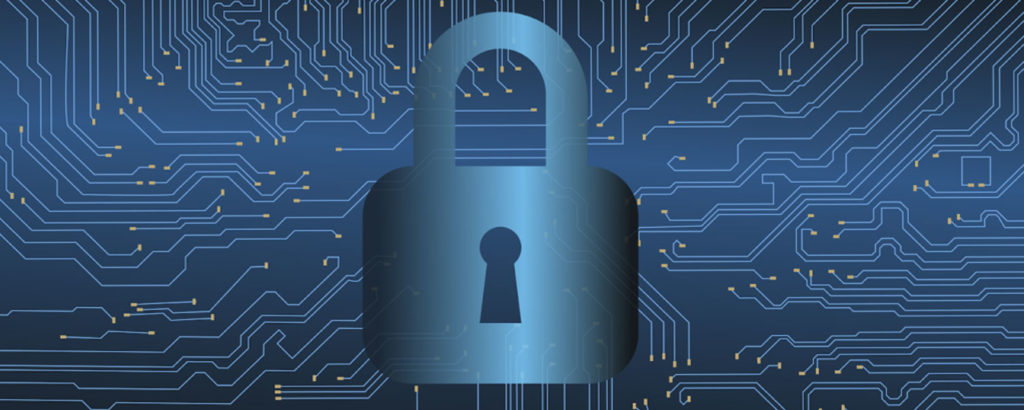
Your organization is the target for many different cyber threats. It’s not only the dramatic dangers like ransomware and DDoS. You could also face ‘unsophisticated’ risks, like phishing and shared passwords. Pushing back against threats also requires the right cybersecurity teams on the job.
That said, the need for skilled cybersecurity staff is at an all-time high. Available professionals fall short of the number of openings; 2.72 million as of 2021. Many industry studies show this workforce gap is also expanding year on year. Unfortunately, the situation is unlikely to change soon. What does that mean for employers, though? How can you build expert cybersecurity teams in this scene? You need a varied approach due to the challenges existing in cyberspace.

Cybersecurity Teams: Creation Challenges
Creating a quality cybersecurity team isn’t easy, so you need to spot the challenges you’ll face. Let’s take a look at some of the top 4 reasons why it’s difficult to create a good cybersecurity team:
- Narrow talent pool to choose from; persistent global workforce shortage.
- Fierce Big Tech competition. Mega-corporations have vast funds that attract the best cybersecurity talent. Likewise, everyone wants to have good companies on their resume. That’s why employees flock to Apple, Alphabet (Google), Microsoft, and Amazon.
- Increased staff retention. The best talent gets the best remunerations and you may not be able to match their contract terms.
- High-pressure role. When a cyber-attack occurs, many claim that cybersecurity professionals should’ve seen it coming.
Good thing you can start small and build your team in stages. Certain roles are essential to a cybersecurity team’s structure. Let’s take a look at these roles so you can tackle this process.
Cybersecurity Teams: Core Structure
You can create dozens of cybersecurity roles. Yet, most small and medium sized businesses won’t need most of these. Sometimes, you also can’t hire everyone you’ll need. Instead, start off with the bare minimum.
It’s not about the titles you’ll give each team member. Rather, it’s about the responsibilities you’ll give them. No matter how small your team is, at least one person needs to have one of the following functions. If your team is smaller, each member will also have more than one function. Let’s examine some key functions:
- Access control
- Application security
- Network security
- Patch management
- Vulnerability management
- Endpoint monitoring
- Backup, disaster recovery, and business continuity
- Cybersecurity training
Now, you know how important cybersecurity teams are. You also know what roles are most necessary. Well then, how do you actually build successful cybersecurity teams?
7 Approaches to Get Your Team Running
Good cybersecurity teams don’t happen by chance. You have to build them from the ground up. Here’s 7 ways you can adopt to do it.
1. Look Inward and Build Up!
Before you run that ad on major job boards, take a step back and look inward. Make sure you’ve already exhausted your internal options. As cyber-attacks have become high-profile, cybersecurity careers also became a spotlighted career. At that, you may find many of your employees hoping to transition to cybersecurity.
Current employees are an underrated and underused asset for new opportunities. Staff can also become ‘typecast’ to particular roles. It becomes harder for others to comprehend they’re working in a different role. Yet, your staff already lines up with company culture.
High-profile external hires may also have narrow skills, and little corporate knowledge. That’s why you should develop onboarding and transitioning programs. These can help you identify internal possibilities.
2. Find Employees Internally
When hiring internally, you’ll first search for people who have formal cybersecurity qualifications. Yet, it’s often unlikely that you’ll find someone with experience-based certifications. CISSP and CISM are rare in any department other than IT security.
Employees who show enthusiasm for cybersecurity should then be your next consideration. Even though they don’t have the exact qualifications, they’re a useful starting point. You may look for someone who has spare time to visit the cybersecurity department. Interest in security matters may also mean they’re open to moving to a cybersecurity role.
Your hiring process will also be more effective if it’s driven by a company-wide policy. From that, encourage staff to apply for open positions in other departments. That’s also an important driver of employee morale and reduces staff turnaround.
3. Be the Employer of Choice
We’re all drawn to success, and while salary is a big deal, it doesn’t motivate employees. Potential employees want great companies on their resume. How do you make your company an attractive choice?
First, show investment in best-in-class tools and technologies. That needs to cover everything from endpoint protection, patch management, and incident response. You don’t have to break the bank, though. Advanced security tools are available as SaaS. You only spend money based on the number of users and devices that are part of your subscription.
Attractive pay could draw professionals in at first. Yet, the frustration coming from poor work tools could lead to early leave. That’s why you should adapt your environment to attract more employees.
4. Offer Career Development Opportunities
It’s critical to have clear development plans for all cybersecurity staff. The threat environment can change fast. At that, it’s important that your team stay abreast of the latest threats. Invest in researching trends, tools, techniques, standards, and regulations.
You also can pay for certification classes and examinations for your staff, but it isn’t the only thing you can do. Enable regular attendance of workshops, exhibitions, and industry conferences. You should also arrange instructor-led training classes and subject staff to refresher exams.
Everyone loves self-development. You’re likely to keep the best people if it’s clear from the outset that they have a future with you. Advancement of your team members’ careers also helps keep them in the company. It’ll also mean they’re not browsing the classifieds.
5. Cross Borders
The COVID-19 pandemic drove up the adoption of remote work. Many IT jobs, including cybersecurity, have long been remote-ready. That means you shouldn’t limit your search to your location.
The person at the right price point and with the right skills could live thousands of miles from you. Going beyond geographical boundaries also opens a much larger talent pool. Likewise, the remote work option will encourage loyalty.
Yet, you’ll find challenges with remote workers, including:
- Time zones
- Cultural differences
- Language barriers
- Slow internet speeds
None of these are deal-breakers, though. Sometimes, it comes down to deciding if the workers’ value outweighs the issues. You should also try to work around these hitches.
6. Reconsider Qualifications
It’s good if you hire cybersecurity staff that have all the right certifications. Unfortunately, though, in a competitive sector, they’re an expensive luxury. As such, flexibility in key requirements is a must during the review process.
You may want CISSP, CISM, CISA, CEH, or OSCP certifications. Yet, you don’t need to insist on a bachelor’s degree in computer science or other IT fields. The CISSP certification, for example, is a sign of the person’s wide experience. You’re better off accepting any certification and rating their soft skills, instead.
7. Don’t Fixate on Technical Expertise
Cybersecurity is a technical function. It’s natural that you look to workers who show the most advanced technical knowledge. It’s also reasonable to look for a tech guru to outsmart those ever more complicated hackers. Still, good cybersecurity is more than technical knowledge.
You need someone who maintains a cool head during a crisis. They should also be willing to listen when an incident occurs, and know how to respond to the threat. The right person will have a talent for problem-solving and a proactive personality. Non-academic standards are also very important, so that’s a step in the right direction.
Final Thoughts
No company, irrespective of size, is off the cybercriminal radar. That’s why you should always invest in hiring and training cybersecurity talent. You also can follow the 7 tips presented above to build your cybersecurity group. That way, when bad actors show up, your new dream team will manage the situation better than you think. Conversely, companies without robust security teams won’t handle any security events well.
FAQ
What is DDoS?
Distributed denial of service (DDoS) is a type of cyberattack. The attackers take over hundreds or thousands of devices. DDoS uses them to send an overwhelming flood of traffic to a target website or network. This takes it offline as server capacity can’t meet querying demand. Companies then need to find ways to reduce the DDoS attack’s severity. You should also have plans in place in case an attack ever occurs.
Why is ransomware so destructive?
Ransomware harms the target in many ways through encrypting storage volumes. This includes:
- The inability to access critical systems
- Financial loss from paying the ransom, or risk of losing files for good
- Data sales happening after payment of a ransom
What is ‘Big Tech’?
Big Tech is a term given to the largest market cap technology companies in the world. At present, this refers to Apple, Microsoft, Alphabet, Amazon, and Facebook. As these companies are large, they also provide a larger cybersecurity risk.
What is the difference between business continuity and disaster recovery?
Business continuity looks to maintain operations during a disruptive event. Disaster recovery focuses on the aftermath of an event. It also aims to bring the company back to normalcy.
What is SaaS?
Software-as-a-service (SaaS) refers to making applications accessible to clients and users over the internet. It usually comes as a subscription service. This allows lightweight applications and web-based applications to leverage cloud computing. SaaS also allows a lower entry cost for companies to resource intensive technology. This may include solutions that use AI, 3D scanning, or reverse engineering capabilities.
Resources
TechGenix’s Cybersecurity 2022 Predictions Article
Take a look at this year’s cybersecurity predictions here.
TechGenix’s Cybersecurity Decision Making Article
Teach your employees how to be autonomous in their cybersecurity decision-making with this article here!
TechGenix’s Cybersecurity On Leave Article
Learn about the cybersecurity risks that occur when employees go on leave in this article.
TechGenix’s 5 Reasons for InfoSec Training Article
Find out the top 5 reasons InfoSec training is important during employee onboarding here.
TechGenix’s Cybersecurity Terms Article
Find the 15 most useful cybersecurity terms for non-tech oriented employees here!
TechGenix’s Next-gen Security Risks Article
Discover the next-gen security risks in this article.



